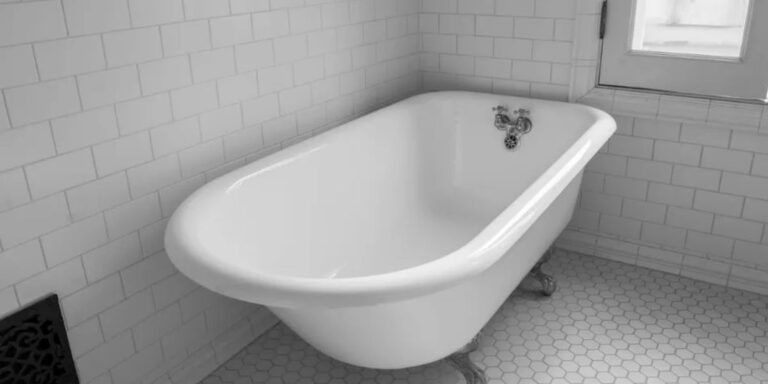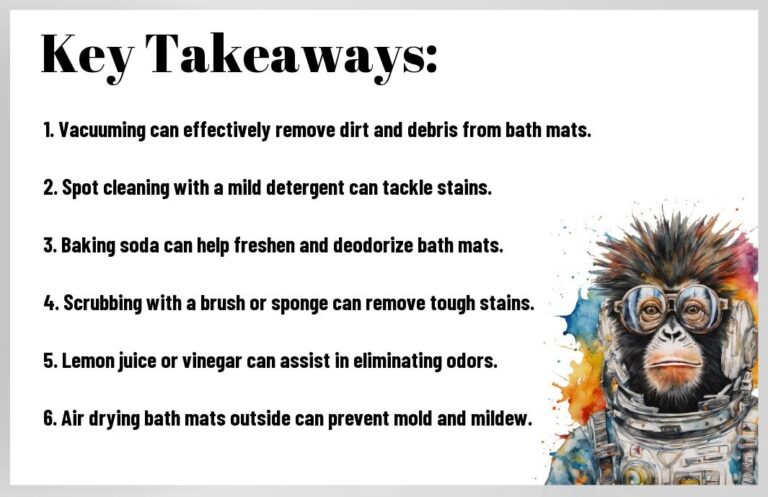Is A Peeling Bathtub Dangerous? What Homeowners Should Know
Bathtubs are a vital part of our daily routine, providing us with a place to relax and refresh. But over time, bathtubs may begin to peel, and this can lead to concerns about safety and health. In this comprehensive guide, we will delve into the questions and concerns regarding peeling bathtubs and how to handle them effectively.
Is a Peeling Bathtub Dangerous?
No, a peeling bathtub is not generally considered dangerous. However, if you have sensitive skin, proper cleaning of the tub is recommended to avoid any potential irritation.
How to Fix Peeling Bathtub?
Repairing a peeling bathtub involves a step-by-step process to ensure a successful outcome. Here’s what you need to do:
Assess and Choose the Right Method
Consider the extent of the damage to determine the suitable repair method. Minor peeling in one area can be addressed with a touch-up kit, while widespread peeling may require resurfacing or refinishing. In such cases, it’s recommended to seek professional assistance.
Prepare the Bathtub
Before starting the repair, ensure that the bathtub is thoroughly cleaned and dried. Use a mild cleaner to remove dirt, grime, soap scum, and other contaminants that could affect the repair job.
Remove the Peeling Areas
Using sandpaper or a steel wool scouring pad, carefully remove all loose and peeling sections from the bathtub surface. Make sure to achieve a smooth and even surface before proceeding. Remember to cover the drain to prevent any repair materials from entering the pipe.
Refinish the Bathtub Surface
If the peeling has significantly affected the bathtub surface, refinishing it becomes the best course of action. During bathtub resurfacing, the old finish or glaze is stripped away, and a fresh coating is applied. Since this process can be messy, hiring a professional refinisher with the required expertise and equipment is advisable.
Prevent Future Damage
To avoid future peeling or chipping, take necessary precautions. Refrain from using abrasive cleaners or harsh chemicals that can harm the surface. Additionally, be cautious not to drop heavy objects or use the tub for storing sharp items.
What Causes a Peeling Bathtub Surface and Is It Dangerous to Health & Safety
Causes of Peeling
The peeling of a bathtub’s surface can result from several factors:
- Poor Quality Materials: Lower-quality materials can wear down more quickly, causing the surface to peel.
- Improper Installation or Maintenance: If the bathtub has not been installed or maintained properly, it may lead to peeling.
- Use of Harsh Chemicals: Certain cleaning chemicals can degrade the surface, leading to peeling.
Is It Dangerous?
Peeling itself might not be directly harmful, but it can lead to several safety and health concerns:
- Slipping Hazard: The uneven surface may cause slipping, leading to physical injury.
- Bacterial Growth: Cracks can harbor bacteria, creating an unsanitary environment.
- Exposure to Harmful Materials: Some older tubs may have materials underneath that could be harmful if exposed.
How to Identify Whether Your Peeling Bathtub Is Dangerous or Unsafe
To determine if your peeling bathtub is dangerous, consider the following:
1. Understanding Peeling
A. Types of Peeling
- Cosmetic Peeling: This type of peeling typically affects only the surface layer, creating an unsightly appearance but posing no immediate harm.
- Structural Peeling: This is more severe and can lead to the bathtub becoming unstable or exposing underlying materials that might be harmful.
B. Common Causes
- Aging and Wear: Over time, bathtubs can wear down, leading to peeling.
- Improper Cleaning: Harsh chemicals can cause the surface to degrade.
- Poor Installation or Material: Low-quality materials or improper installation can lead to early peeling.
2. Identifying Dangerous Peeling
A. Visual Inspection
- Surface Cracks: Look for deeper cracks that go beyond the surface.
- Material Exposure: If underlying materials like fiberglass are exposed, it might be a sign of dangerous peeling.
- Wobbling or Unstable Structure: If the bathtub feels unstable, it’s a red flag.
B. Physical Inspection
- Rough Texture: If the peeled areas are rough to the touch, it could be a sign of structural damage.
- Water Leaking: Check for water leaking into the cracks, as this could lead to further damage.
3. When to Seek Professional Help?
If you identify any signs of dangerous peeling, it’s wise to seek professional assistance. A trained professional can assess the situation and provide proper repair or replacement if needed.
Should You Replace or Repair Your Peeling Bathtub – Pros & Cons of Each Option
It on the extent of the peeling and the overall condition of the bathtub. If the peeling is minor and localized, it may be possible to repair it. However, if the peeling is extensive and the bathtub is old or damaged, it may be more cost-effective and practical to replace it.
Replace
Repair
Steps to Take If Your Bathtub Is Found to Be Unsafe
- Stop Using the Bathtub: Until repaired or replaced, avoid using the bathtub.
- Consult a Professional: Seek professional advice on whether to repair or replace.
- Take Appropriate Action: Based on the assessment, either repair or replace the bathtub.
Alternative Solutions for Reviving an Unsafe Tub – Refinishing or Reglazing Options
Refinishing or reglazing is an effective way to revive an unsafe or unsightly tub:
- Refinishing: Involves sanding down the surface and applying a new finish.
- Reglazing: Similar to refinishing but involves applying a new glaze to the surface.
Both options can make the bathtub look new again and provide a safer, cleaner surface.
Tips on How to Maintain Your Newly Refinished/Reglazed Tub Surface
- Avoid Harsh Cleaners: Use gentle, non-abrasive cleaners.
- Regular Maintenance: Regular cleaning helps maintain the finish.
- Follow Professional Advice: Adhere to the guidelines provided by the professional who refinished or reglazed the tub.
What does it mean when my bathtub is peeling?
When your bathtub is peeling, it means the surface coating is wearing away. This could be due to age, poor quality material, or abrasive cleaners.
Are bathtubs supposed to peel?
Bathtubs aren’t supposed to peel. Peeling is typically a sign of wear or damage and may require repair or refinishing.
Is bathtub paint toxic?
Bathtub paint can be toxic if it contains certain chemicals like lead. It’s important to use paints specifically designed for bathtubs and follow the instructions for safe application.
Is refinishing a bathtub dangerous?
Refinishing a bathtub can be dangerous if not done correctly. It often involves strong chemicals and precise techniques, so hiring a professional or following proper safety guidelines is essential.
Conclusion
A peeling bathtub is not merely an aesthetic concern; it can also pose health and safety risks. Whether you choose to repair, replace, refinish, or reglaze, it is essential to address the issue promptly and properly. Regular maintenance and care can prolong the life of your bathtub, ensuring that it remains a safe and welcoming part of your home. If in doubt, don’t hesitate to consult a professional to guide you in making the best decision for your specific situation.
Read more:
- Is It Safe to Bathe in a Reglazed Bathtub? Here Are the Safety Factors
- Why Bathtub Feels Like Sandpaper?
- Can You Paint a Fiberglass Bathtub? Breathe New Life into Your Bathroom
- Can You Drown In A Bathtub? The Unforeseen Dangers

Amanda has been designing and installing bathtubs for over 15 years. She first got interested in the bathtub industry while working as an interior designer right after college. During her years as a designer, Amanda was frustrated by the lack of high-quality, unique bathtub options for her clients. This passion led her to start her own bathtub website in 2009.







